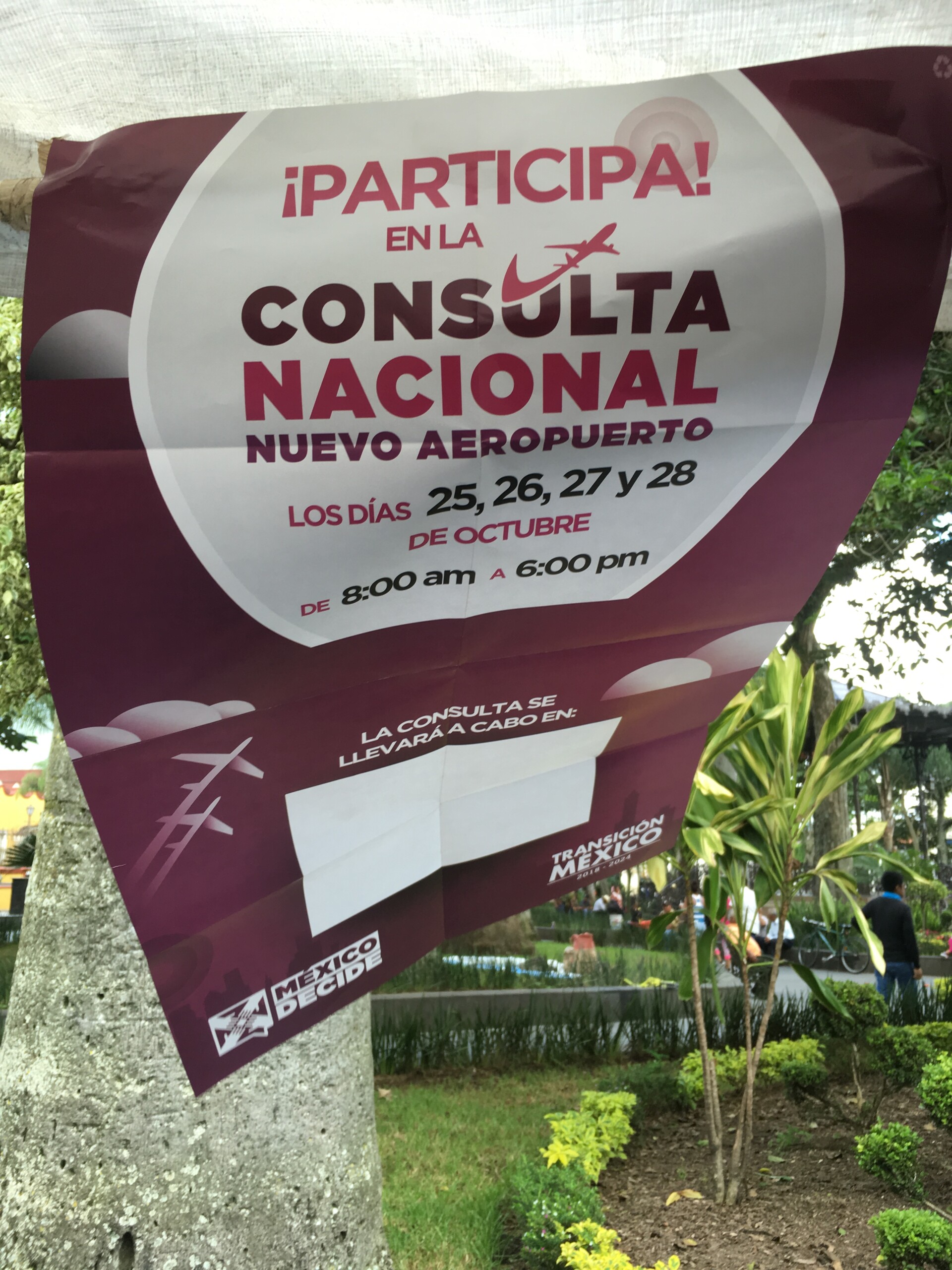The current Mexican administration has seen quite a bit of turbulence (terrible pun intended) in the aviation industry. No matter which side you’re on, these events have already happened:
- A “national referendum” on a new Mexico City Airport. The project that was cancelled after nearly 70% was completed, the Texcoco Airport, was replaced by the now-operational FAIA, or Felipe Ángeles International Airport, an albatross much farther from the city than Texcoco. There was apparently a movement that protested Texcoco’s construction; that site is now being turned into a vast park. (links in Spanish)
-

National Referendum on What to Do About the New Mexico City Airport, October 2018 
Mexico City’s Abandoned Texcoco Airport, July 2021 - The Agencia Federal de Aviación Civil (AFAC), Mexico’s version of the United States’ FAA (Federal Aviation Administration), was downgraded from a CAT I (category I) to a CAT II rating from the latter in May 2021. Essentially, it means the FAA doesn’t consider Mexican airspace particularly safe (even though airlines can keep flying between the two countries??? it’s political). Mexican airlines cannot start new routes to the United States, U.S.-based carriers can’t codeshare with Mexican ones, and theoretically, the FAA is more scrupulous about Mexican airlines crossing the border.
More importantly, a CAT II rating can absolutely be upgraded to a CAT I, although there are no rumblings about this happening anytime soon. (n.b. what’s this I hear about Aeromexico starting new service from FAIA to Houston IAH later this year?)
- Aeromar, a Mexico City-based regional airliner, went out of business earlier this month. A Brazilian airline almost stepped in to spruce it up, but that fell through, leaving no more interested bidders. Not to mention, Interjet, which had been grounded since 2020, was finally declared bankrupt in August 2022.
Any good news? Or, at least not all bad news?
- Aeroméxico, the country’s flag carrier, left Chapter 11 in the contrails of 21 December, after having been in bankruptcy proceedings for two years.
- According to Airports Council International, in 2021 Cancún was the 10th busiest airport in the world for international passenger enplanements/deplanements. (On that note, it seems Tulum might be getting its own airport.) Basically, lax COVID-19 entry requirements and countless flights from the United States combined to help make that happen.
- Finally, Mexicana de Aviación, commonly abbreviated to Mexicana, might be coming returning to the skies.
Coincidentally, they were my first introduction to Mexican aviation, having flown San Antonio SAT – Mexico City MEX – Acapulco ACA in February 1997; in fact, I vividly remember eating stir-fried beef and flan, and being confused by that meal. Nevertheless, the experience was good overall, and I looked forward to flying them again.
Mexicana Banner at Mexico City International Airport, August 2010 I took the above photo at Mexico City’s airport in August 2010; on closer inspection, I was in Mexico City when Mexicana stopped flying. Anyway, the banner reads “very soon Mexicana de Aviación will return to fly through the skies again.” Nearly 13 years later, that might happen. Maybe. Hmm.
Earlier this year, the Mexican government purchased the Mexicana brand, with the intent of starting a military-run revival of North America’s oldest airline.
My apologies if this post seemed awfully U.S. – Mexico-centric. Whereas Cancun is a big hit with Europeans, too, and Spain and Colombia have added more routes to the country in the past few years, it’s difficult to understate how busy US/Mexico traffic is.
I hope this small outline of the state of Mexican aviation — with some Spanish language vocabulary thrown in for flavor — piqued your fascination with that wonderful country. Plus, for those of you who have made it this far, I’ve got a couple more nuggets of Mexico transportation news for you–
There’s a massive infrastructure project that’s plowing through nature, wildlife habitats, and (probable) archeological dig sites in the Yucatan Peninsula. Called the Tren Maya (Maya Train), popular stops along the route will include Chetumal, Tulum, Cancun, Chichen Itza, Merida, Edzna, and Palenque. the Tren Maya project was begun on 16 December, 2018, and is expected to be completed at some point in 2024.
And what’s this I hear about a “Baja Train,” connecting Tijuana with Los Cabos?

The current Mexican administration has seen quite a bit of turbulence (terrible pun intended) in the aviation industry